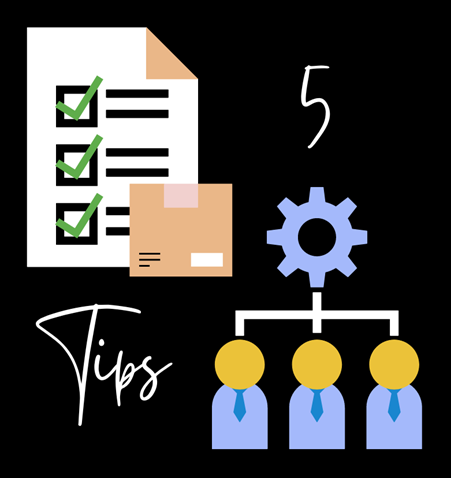
The backroom has different meanings these days. It could mean the physical backroom if at a facility with a one-way mirror, a separate room at the facility where the client is viewing from if there is no one-way mirror, a remote connection if the client is one location and the QREs are in another, or a virtual backroom if conducting QREs online. The tips & tricks listed below can work in all scenarios.
- Prior to first QRE: meet with your client 45 minutes to 1 hour prior to the first QRE. This will allow you and the client to discuss any last-minute changes or issues that may have come up since the last time you spoke. It also gives you and clients you haven’t met the opportunity to meet each other and answer any questions they have about the sessions. If you have a client-only page in your guide, tell them to review that prior to the session.
- Set up expectations appropriately: Make it clear to your backroom that your guide is a guide and not a script. You will not be reading your questions word for word the way they are written. You will not necessarily ask your questions in the order they are written. Explain the reason behind this so everyone is on the same page.
- Be prepared: Make sure you have copies of the final guide, worksheets, concepts, ad copy etc. for the client. Don’t assume the clients that are viewing the research have the final version of the materials. Also, make sure the client has the most recent respondent grid for each session that is taking place that day. Don’t have the facility give them grids for other days of research since people can fall out the day prior and replacements need to be found.
- Client spokesperson: Having a client spokesperson will help the moderator know who to speak to about the research while it’s being conducted. For RIVA, this is the person that we have been working with on the project. When we check with the client during the “false close” for any additional questions or follow-ups, having the client spokesperson saves time and confusion for the moderator. We ask them to write neatly the question or questions that need to be asked. We can then go back into the research room and ask those questions before finishing the session.
- Client work: Have your clients keep a list of AHA’s and confirmations as they watch the QRE. This will help keep them focused on the research and help with the client debrief. At RIVA, we ask the clients to write one AHA or one confirmation on a sticky note and place it on an easel sheet. Make sure your easel sheet is labeled for the client, so they know where to place the sticky notes.
Being prepared and setting expectations helps in making sure the sessions run smoothly and you aren’t worrying about your back room. This allows you to do your job, which is to listen to what respondents are saying so you can probe and get the data your client needs to move to the next step.
Written by: Amber Tedesco, CEO at RIVA


